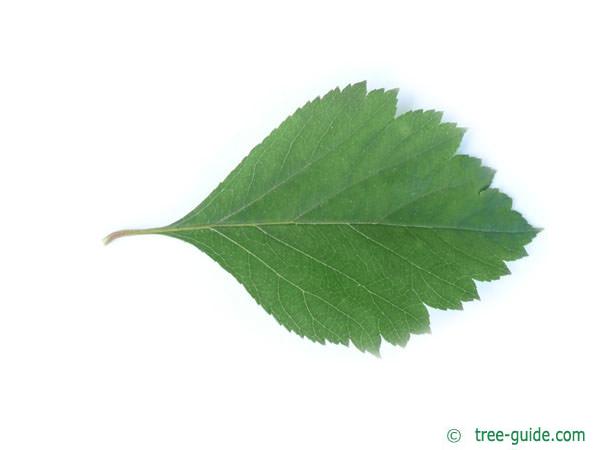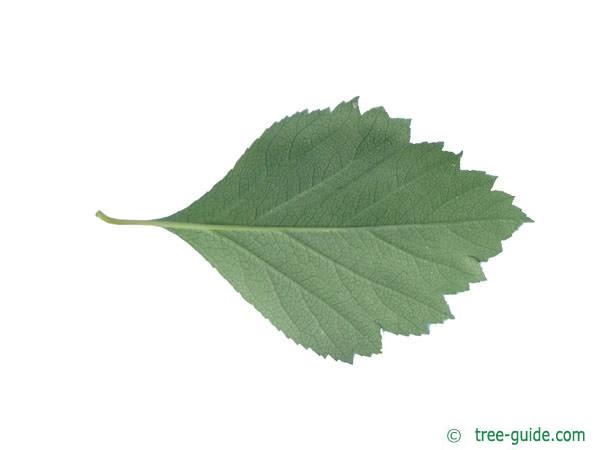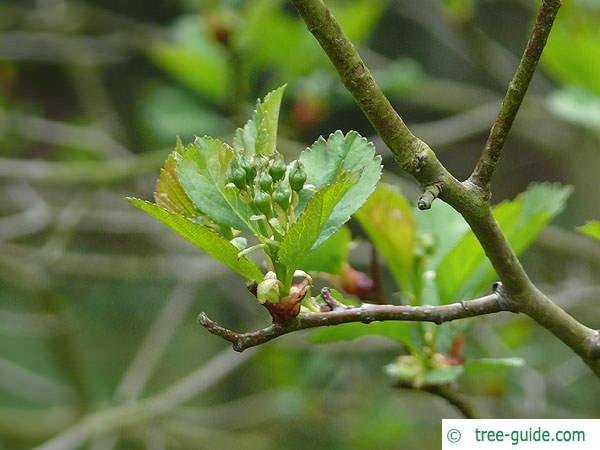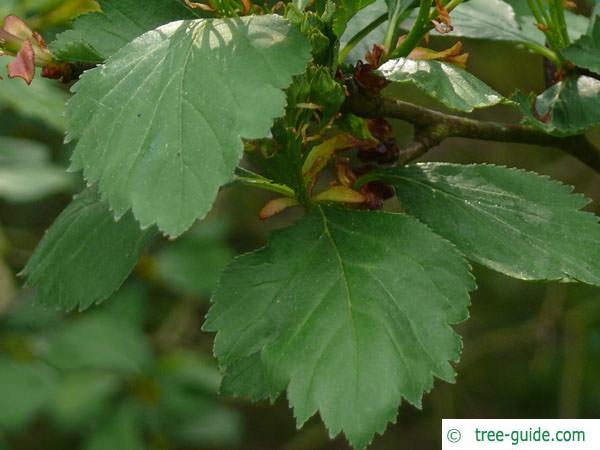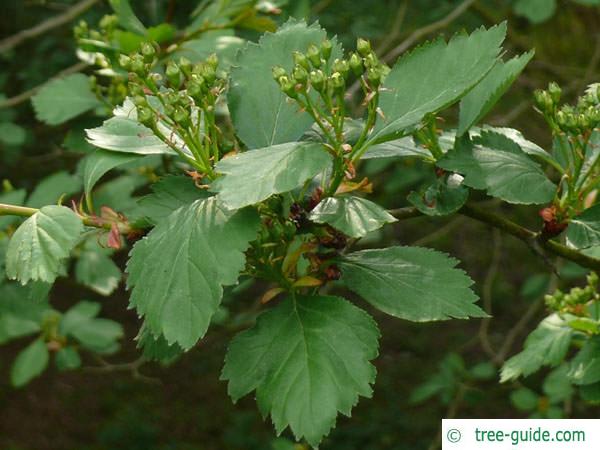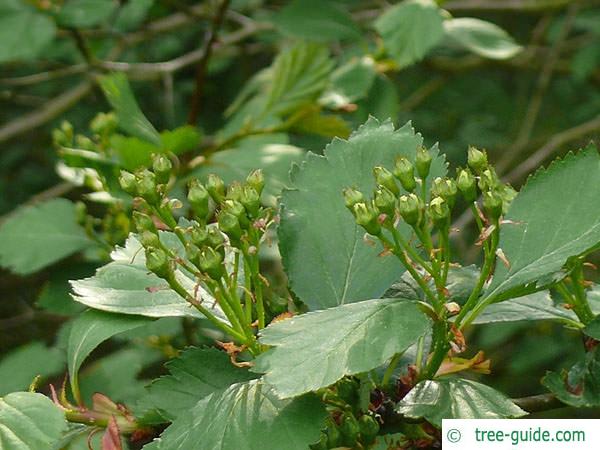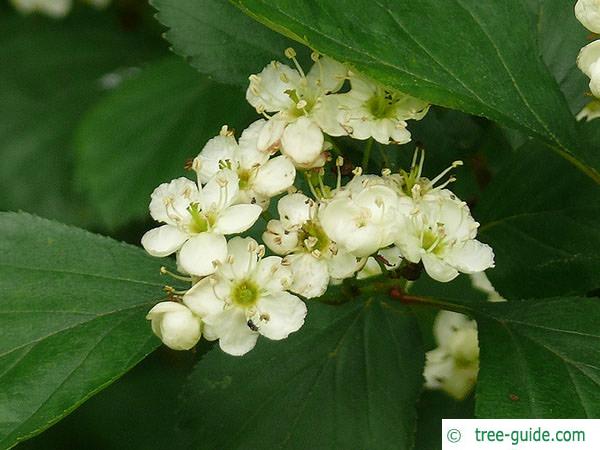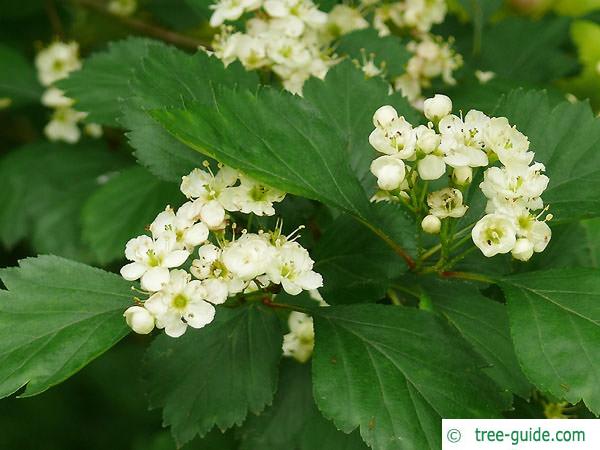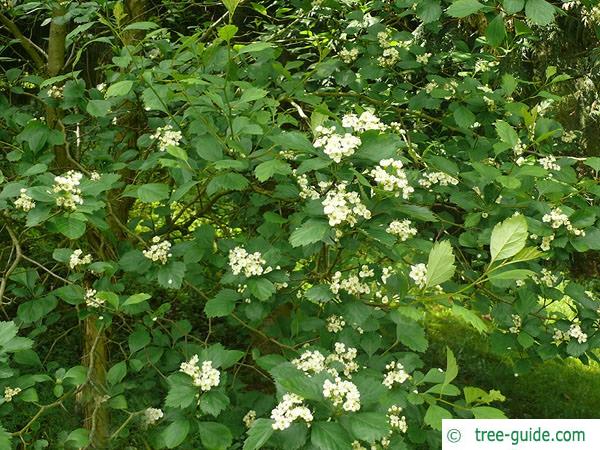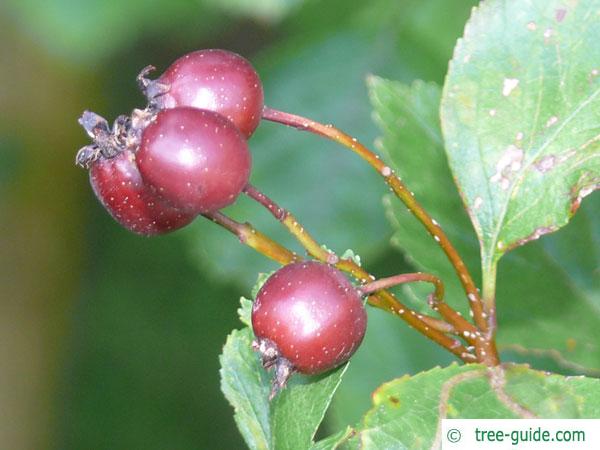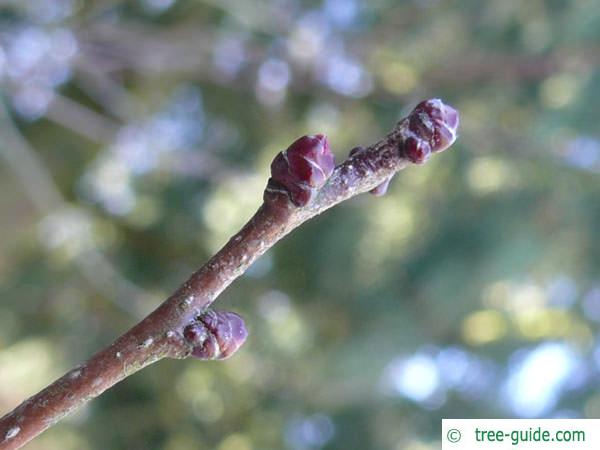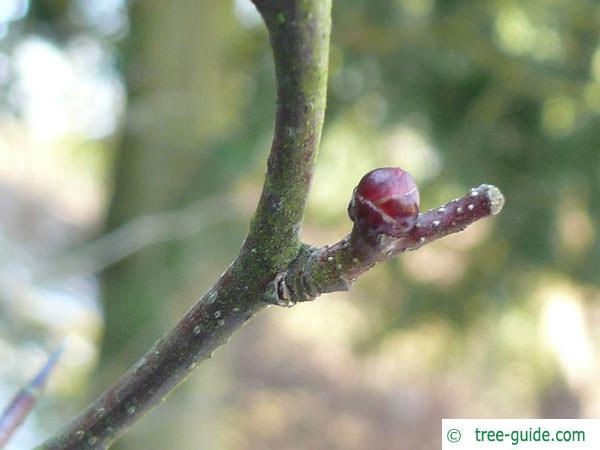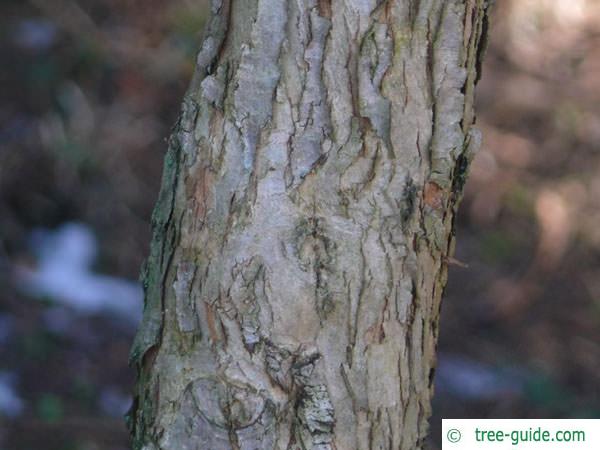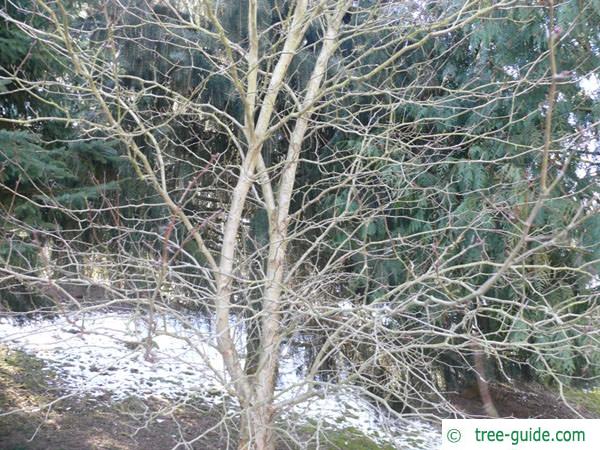Basisdaten
The Douglas hawthorn native to northwestern North America. In Germany it is named after the U.S. state of Ohio. Its botanical name is derived from the Scottish botanist David Douglas.
Tree profile
The leaves of Douglas hawthorn are ovate, lobed, tomentose, green and up to 5 cm (2 in) long. The leaf margin is serrated.
The flowers stand erect together in fascicle. The single flower has five white petals.
The fruit is apple-like, nearly black and about 1 cm (0.4 in) in size.
The branches are reddish brown with glossy thorns, 2-3 cm (0.8-1.2 in) long.
single tree, planting in groups
tolerates pruning
Hawthorns additional information
overview leaves | overview blossoms | overview fruit | overview trunkoverview winter | trees







